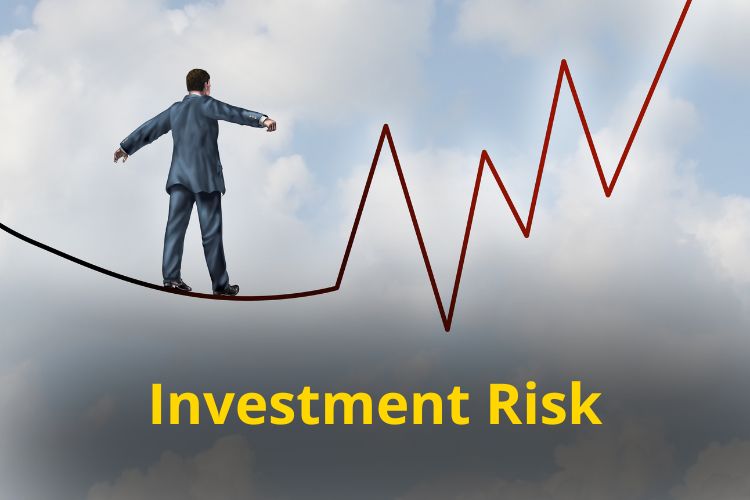Every investor faces uncertainty. Investment risk is the chance that an investment’s returns don’t match your expectations—even worse, that you may lose money. Whether you’re a seasoned investor or just starting out, understanding and managing risk is essential.
In this guide, we’ll explore what investment risk really means, the different types you should know, how to assess your risk tolerance, and practical ways to build a smart, flexible strategy tailored to your financial goals.
What Is Investment Risk?
What Is Investment Risk?
Definition:
Investment risk refers to the possibility that actual returns will deviate from what you expect, potentially resulting in losses—even total loss—in extreme cases.
That doesn’t make risk bad—it simply makes it a fundamental feature of investing. Higher potential returns often come with higher risk, and your goal is to manage it, not avoid it.
Common Types of Investment Risk
Below are the most important types of risk every investor should understand:
1. Market (Systematic) Risk
Broad market fluctuations caused by economic cycles, interest rates, inflation, or geopolitical events. It’s unavoidable and affects most investments.
2. Credit Risk
The risk that issuers (e.g., bond issuers) fail to make interest or principal payments.
3. Inflation (Purchasing Power) Risk
The threat that your returns won’t keep up with inflation, eroding real value over time.
4. Liquidity Risk
When you can’t sell an asset quickly without losses—common in real estate, private equity, or collectibles.
5. Interest Rate Risk
Changes in rates can negatively impact bond and fixed-income investments, especially long-term ones.
6. Currency (Exchange Rate) Risk
Investments in foreign assets expose you to fluctuations in exchange rates, potentially altering returns.
7. Political/Macro Risk
Geopolitical shifts, changes in regulations, or macroeconomic policy can disrupt investment performance WikipediaWellington.
8. Unsystematic (Diversifiable) Risk
Risks specific to individual companies or industries, which can be reduced through diversification.
Why Understanding Investment Risk Matters
- Helps you choose the right asset mix
- Prevents panic-selling during downturns
- Aligns your investments with your goals & emotions
- Builds a resilient, long-term strategy
More information: Why Financial Planning Matters More Than Ever.

Step-by-Step: Managing Your Investment Risk
Step 1 – Assess Your Risk Tolerance
Ask yourself:
- “How would I feel if my portfolio dropped 20% in a week?”
- “Am I investing for short-term gains or long-term growth?”
Your risk tolerance is your emotional comfort; risk capacity is your financial ability to absorb losses Investopedia.
Step 2 – Match Risk to Your Time Horizon
| Time Horizon | Strategy |
|---|---|
| <1 year | Very low-risk (savings, CDs) |
| 1–5 years | Low to moderate risk |
| 5–10 years | Balanced portfolio |
| 10+ years | Growth-oriented, more equities |
Step 3 – Research Before Investing
Before committing capital, understand:
- What you’re investing in
- Historical performance
- Fees and taxes
- Liquidity
- Worst-case scenarios
Avoid investments you don’t fully understand.
Step 4 – Diversify to Reduce Risk
Spread your capital across different assets to mitigate unsystematic risk. Example mix:
- 50% U.S. Stocks
- 20% International Stocks
- 20% Bonds
- 10% Real Estate/Alternatives
Step 5 – Start Small and Scale Up
Test new strategies with small amounts. Increase only as you gain confidence. It protects your capital and builds experience over time.
Step 6 – Review and Rebalance Regularly
Markets and life change—your portfolio should evolve too. Rebalance yearly or after major life shifts (e.g., job change, marriage).
Final Thoughts — Embrace Risk Confidently
Risk is not something to fear—it’s something to understand and navigate. By assessing risk types, knowing your tolerance, and diversifying wisely, you transform risk from a threat into a tool that propels your financial growth.
Stay informed, stay flexible, and remember: You’re in control — not the market.
More information: 7 Smart Financial Habits to Build Wealth and Peace of Mind.
FAQ – How to Assess Investment Risk.
What is investment risk and why does it matter?
Investment risk is the chance that your returns will be lower than expected — or that you may lose money. Understanding risk helps you avoid emotional decisions and build a strategy that fits your goals.
How do I determine my risk tolerance?
Consider how much volatility you’re comfortable with and how long you plan to invest. Risk tolerance ranges from conservative to aggressive and depends on your financial goals and emotional readiness.
What are the main types of investment risk?
Key risks include market risk, credit risk, liquidity risk, inflation risk, interest rate risk, and political or regulatory risk. Each affects different types of assets.
How does time horizon affect investment risk?
The longer your time horizon, the more risk you can generally afford to take. Short-term goals require safer investments, while long-term goals may benefit from higher-risk, higher-return assets.
What’s the best way to reduce investment risk?
Diversification is key. Spreading your money across different asset classes and sectors helps protect your portfolio from major losses if one investment underperforms.

